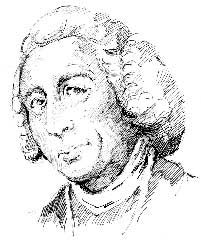Huntingdonshire
CROMWELL COUNTRY ∗ PRESIDENTIAL ANCESTORS
∗ A UNIQUE COMMUNITY
Little Gidding, where Charles I and T.S. Eliot found peace.
HUNTINGDONSHIRE FOLK
Capability Brown ∗ Catherine of Aragon ∗ Rula Lenska
Ramsey Abbey
Huntingdon is renowned as the birthplace of that most famous of Cromwells, Oliver the Lord Protector, but the Cromwells were a leading Huntingdonshire family for long before that. It began with Thomas Cromwell, Henry VIII’s chief agent and advisor during the Dissolution of the Monasteries, who used his position to distribute lands and estates to his relatives in Huntingdonshire. RAMSEY ABBEY, in the north of the county, one of the richest of the English abbeys, third after St Albans and Glastonbury, he gave to his nephew Richard Williams, along with the manor of Hinchingbrooke, outside Huntingdon. This was on condition that Richard changed his name to Cromwell, which he did, and hence these estates became the property of the Cromwell family.
Only the ruins of the 15th-century gatehouse remained from the original abbey at Ramsey, and Richard’s son Sir Henry Cromwell built a fine new house from the ruins over the site of the Lady Chapel. Oliver Cromwell’s spendthrift uncle Oliver moved to Ramsey after he was forced to sell Hinchingbrooke in 1627, as a result of entertaining James I too lavishly, and he died there not long afterwards, a pauper. Oliver’s cousin William died there too, from the plague in 1666, infected by a piece of cloth he had ordered to be sent from London to make a new coat with. Over 400 people in the area died as well. The Abbey house is now a school.
The Howlands of Fenstanton
FENSTANTON, a pleasant, watery village with a curious 18th-century lock-up on the green, is the birthplace of JOHN HOWLAND, one of the Pilgrim Fathers, and buried in the parish church are his parents, Henry and Margaret, ancestors of an impressive list of US Presidents.
Ramsey Abbey School
American descendants of John Howland include the film actor HUMPHREY BOGART, the Bishop of Massachusetts PHILLIPS BROOKS, who wrote the Christmas carol ‘Oh Little Town of Bethlehem’, the poet HENRY LONGFELLOW, and US Presidents FRANKLIN D. ROOSEVELT, GEORGE BUSH and GEORGE W. BUSH.
Not long after John sailed on the Mayflower, in 1620, his two brothers Henry and Arthur also emigrated to America. HENRY HOWLAND JNR’S descendants include Presidents RICHARD NIXON and GERALD FORD. ARTHUR HOWLAND’S descendants include SIR WINSTON CHURCHILL.
Nicholas Ferrar
1593–1637
LITTLE GIDDING is nothing more than a tiny chapel hidden in woods to the west of the Great North Road, but the sense of deep peace and seclusion felt here is strangely potent, more than almost anywhere else in England. Here, in 1625, came NICHOLAS FERRAR and his family, refugees from the plague in London, and here they founded the only Church of England religious community to be created between the Dissolution of the Monasteries and the Oxford Movement Revival of the 19th century.
Nicholas Ferrar was born to a London merchant who counted amongst his friends Sir Francis Drake and Sir Walter Raleigh. Nicholas grew up to be a director of the Virginia Company, sponsor of the first American colonies, and when the company failed, he turned to the more spiritual calling that had always attracted him. He was ordained a deacon and set out to find a quiet place where he could form his own religious community. The half-derelict manor house and chapel of Little Gidding, deserted since the Black Death in the 14th century, were perfect.
The community he formed consisted of his mother and brother and their extended families, about 30 people in all. They restored the house and chapel, which was being used as a hay barn, held regular services, taught and assisted the local poor, and lived their lives to the rhythms of Cranmer’s Book of Common Prayer.
They also wrote and bound essays and stories, and the greatest works to come out of Little Gidding were the ‘Harmonies’, a blending of the four Gospels in chronological order, which Ferrar composed by getting his nieces to cut out the passages as he directed, and then pasting them on to a manuscript in order. When a curious Charles I came to visit, he was so taken with the ‘Harmonies’ that he asked Ferrar to create one for his son, the future Charles II – the gorgeously produced book is now in the British Museum.
In the run-up to the Civil War the King came back to Little Gidding to find refuge on his way to Nottingham, even though Nicholas Ferrar had long since died and was buried in his tablet tomb outside the chapel. During the Commonwealth the chapel and the manor were ransacked by the Puritans, and the community was broken up, leaving just the chapel, with its exquisite Jacobean stalls, as a reminder of a unique and special Anglican community.
In the spring of 1936, when the hedgerows were white with Queen Anne’s Lace and mayflower, the poet T.S. ELIOT paid a visit to Little Gidding. He was so overwhelmed by the beauty and solitude he found there that he was moved to write the final part of his poetical reflections, the Four Quartets, which he called ‘Little Gidding’.
Well, I never  knew this
knew this
about
HUNTINGDONSHIRE FOLK
Capability Brown
1715–83
Buried in the churchyard at Fenstanton is England’s greatest landscape gardener, LAUNCELOT ‘CAPABILITY’ BROWN. Born in Northumberland, Brown learnt his trade under William Kent, who was working on his ‘new English style’ at Stowe, in Buckinghamshire, and eventually married Kent’s daughter.
He left Stowe to set up his own business and quickly became highly sought after. His nickname came from his habit of saying, on being shown around a new property, ‘This site has great capabilities.’ His aim was to ‘perfect nature’, with smooth undulating lawns leading the eye away from the house towards clumps of trees, hills and lakes, creating a very English view. Some accused him of vandalising the more formal gardens of previous generations, as based on the French style found at Versailles, but his ‘English’ designs proved very popular and he eventually laid out some 170 gardens, including those of almost all the best-known English country houses, Bowood, Petworth, Althorp, Burghley, Longleat, Stowe and Blenheim, the latter being considered his masterpiece.
When asked to go and work in Ireland, he declined, saying, ‘I have not finished England yet!’
At the end of his life he was given a lovely 17th-century manor house in Fenstanton by the Earl of Northampton, as a thank you for his work on the Earl’s gardens at Castle Ashby. He became High Sheriff of Huntingdonshire and died in Fenstanton in 1783.
CATHERINE OF ARAGON, Henry VIII’s first wife, was sent under house arrest to KIMBOLTON CASTLE in 1534, for refusing to recognise her divorce from the King. Already suffering from her cruel treatment, she was further weakened by the damp fenland air and died at Kimbolton in 1536. Her body was taken to Peterborough Cathedral for burial, although she is said to haunt the castle, which has been partly rebuilt and now houses a school.
RULA LENSKA, actress, was born in ST NEOTS in 1947.


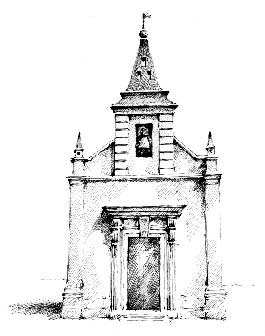


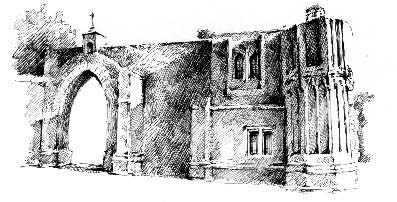
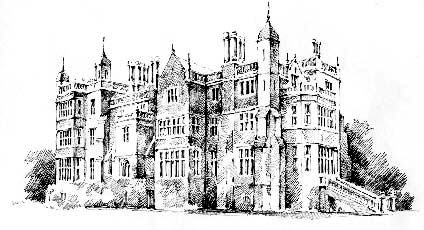
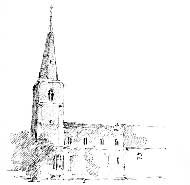
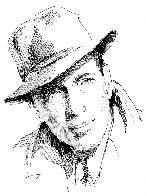
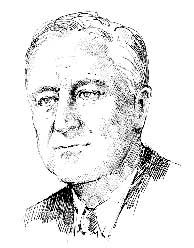

 knew this
knew this